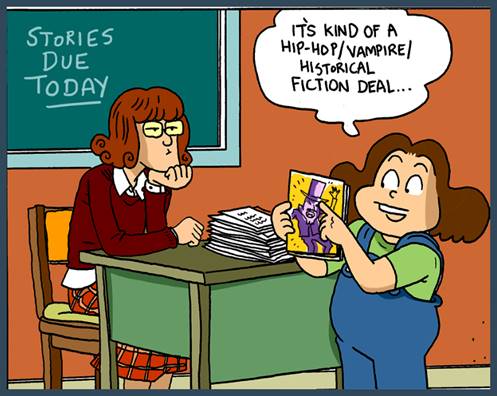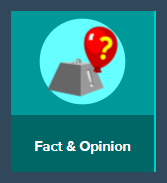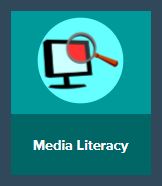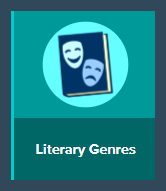Types of Writing

Some of the most popular books for young
readers combine multiple genres or subgenres.
Reading Information Text (11-12.10)
By the end
of grade 11, read and comprehend literary nonfiction in the grades 11-CCR text
complexity band proficiently, with scaffolding as needed at the high end of the
range.
Let's Practice: Key Terms
Section A: Nonfiction
|
Types of Writing |
Author's Purpose |
Point of View |
|
Nonfiction
|
To inform, explain,
give directions, illustrate, or present information. |
The author's point of view and tone is primarily neutral. |
A nonfiction book provides an opinion about facts and
reality.
Ø Facts
o A statement that can be proven true or
false
Ø Opinion
o Statements that cannot be proven true
or false
o Based on an individual's person's
beliefs and feelings
All biographies and autobiographies are nonfiction. Books written
about history are also nonfiction. Most things written in the newspaper
are nonfiction. Newspaper articles about weather, sports, and births and deaths
are a few examples of nonfiction. Poems and dramas are also considered
nonfiction.
Ø Autobiography
o Story of a person's life, written by
that person
o 1st person point of view
o Includes journals, diaries, letters,
and memoirs
Ø Biography
o Story of a person's life told by
someone else
o 3rd person point of view
Ø Essay
o A short piece was written on one
subject
o Found in newspapers and magazines
o Purpose à to share opinions, entertain,
persuade, and describe
Tips for
Reading Nonfiction
1.
Preview the selection
2.
Clarify the organization
3.
Summarize the main idea
4.
Separate facts from opinions
5.
Evaluate what you read
Let's Practice: Fact
& Opinion
Section B: Persuasive Pieces
|
Types of Writing |
Author's Purpose |
Point of View |
|
Persuasive Pieces
|
To persuade by
expressing an opinion to convince readers to think/feel/act a certain way. |
The point of view reflects the author's attitude about a subject. Sometimes the opinion is directly
stated, and other times, it is implied. The author may try to convince
readers by using tone to appeal to their feelings and values. |
A persuasive
text is written to convince you to change your thinking, spend money,
support a cause, or offer a solution to a problem.
Ø Examples
o Advertisements
o Commercials
o Political Speeches
o Editorials
o Movie reviews
o Book reviews
Ø Key Words
o Encourage
o Prove
o Sell
o Convert
o Influence
o Urge
o Convince
Let's Practice: Media Literacy
Section C: Fiction
|
Types of Writing |
Author's Purpose |
Point of View |
|
Fiction
|
To illustrate a theme, event, or story that conveys a
mood. Usually written to entertain. |
The author may use characters
or narrators to express attitudes
in the story. The tone might be light and humorous or severe and sad. |
A fiction text is a make-believe. Harry Potter is an example of a
fiction book. Sometimes fiction books almost seem real. This is
because not everything in a fiction book is make-believe. If you
use your imagination and write a book about a fantastic trip to Africa, some
parts of the fiction book are facts. The names of the cities you
visit and the animals you see are real. However, the trip is make-believe
because you create it with your imagination.
Ø Examples
§ Storybooks
§ Plays
§ Movies
§ Comic strips
§ Video games
Ø Key Words
§ Tell
§ Share an experience
§ Relate
§ Provide details
§ create
Let's Practice: Literary Genres


